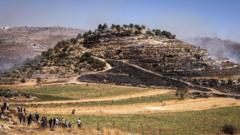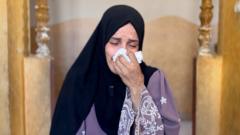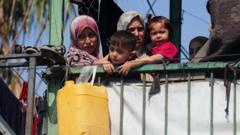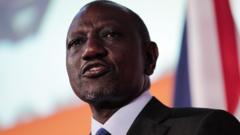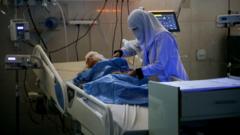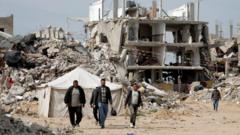The tragic shooting at the Capital Jewish Museum in Washington is another grim development in a rising tide of antisemitic incidents that have surged since October 2023.
Shooting Outside D.C. Jewish Museum: A Disturbing Reflection of Rising Antisemitism

Shooting Outside D.C. Jewish Museum: A Disturbing Reflection of Rising Antisemitism
Recent antisemitic violence is linked to ongoing conflicts and political tensions around the globe.
The entrance to the Capital Jewish Museum in Washington was secured following the fatal shooting of two Israeli Embassy employees on Wednesday. This incident highlights a disturbing escalation of antisemitic acts worldwide following the Hamas attacks in October 2023, which resulted in the loss of over 1,200 lives and the abduction of approximately 250 individuals.
In the subsequent 19-month conflict, antisemitic offenses have reportedly doubled or tripled globally, fueled by Israel's military actions in Gaza. These tensions have not only seen a dramatic rise in verbal and online attacks against Jewish communities but have also intersected with physical acts of violence, including vandalism characterized by Nazi symbolism and direct threats.
Professor Uriya Shavit, director of the Religious Studies Program at Tel Aviv University, stated, “Everywhere across the board, you had more incidents than before Oct. 7 — that impression is lasting.” Despite the complexity of defining these antisemitic acts amidst significant political and humanitarian discourse, the metrics indicate an alarming global trend.
The ramifications of these sentiments were particularly evident during the protests on U.S. university campuses in 2024, where the challenge of differentiating between political expression and hate speech further complicated the landscape. However, none of these occurrences manifested the lethal violence witnessed at the Jewish museum, where the American Jewish Committee had gathered for a diplomatic reception.
This heartbreaking episode serves to underscore the strains facing communities worldwide as they grapple with rising hostility and violence, illuminating the urgent need for societal introspection and action against hate in all its forms.
In the subsequent 19-month conflict, antisemitic offenses have reportedly doubled or tripled globally, fueled by Israel's military actions in Gaza. These tensions have not only seen a dramatic rise in verbal and online attacks against Jewish communities but have also intersected with physical acts of violence, including vandalism characterized by Nazi symbolism and direct threats.
Professor Uriya Shavit, director of the Religious Studies Program at Tel Aviv University, stated, “Everywhere across the board, you had more incidents than before Oct. 7 — that impression is lasting.” Despite the complexity of defining these antisemitic acts amidst significant political and humanitarian discourse, the metrics indicate an alarming global trend.
The ramifications of these sentiments were particularly evident during the protests on U.S. university campuses in 2024, where the challenge of differentiating between political expression and hate speech further complicated the landscape. However, none of these occurrences manifested the lethal violence witnessed at the Jewish museum, where the American Jewish Committee had gathered for a diplomatic reception.
This heartbreaking episode serves to underscore the strains facing communities worldwide as they grapple with rising hostility and violence, illuminating the urgent need for societal introspection and action against hate in all its forms.

